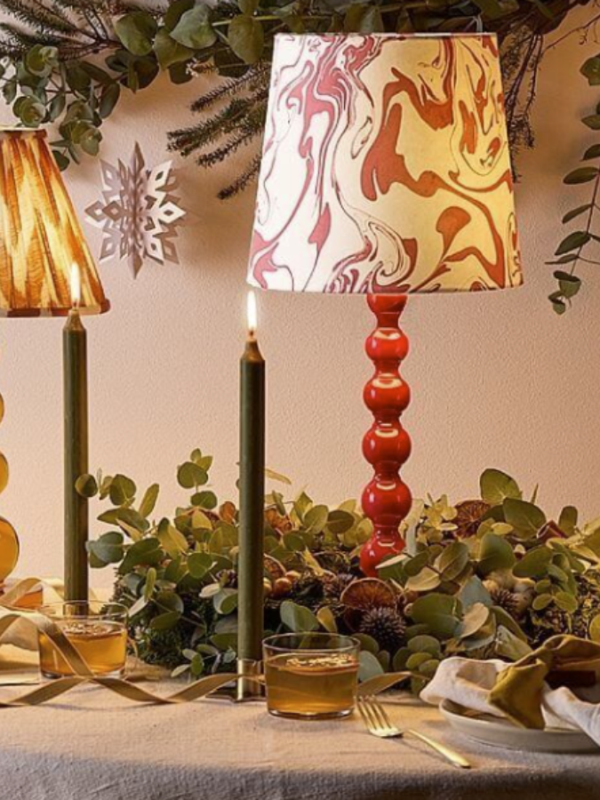[Note: Interviews were conducted prior to the most recent announcement by the Trump administration that raised the tariff from goods made in China to 125%]
Every lighting showroom in the U.S. carries products made in China — from lighting fixtures and portable lamps to ceiling fans, decorative accessories, and wall art. Similarly, most American lighting showrooms carry at least one product line that comes from a Canadian company.
Max Cohen of 2nd Avenue and Meyda Lighting – which manufactures 70% of its products in Upstate New York and imports 30% from China – stated on social media this week, “The cost to build light fixtures in China has surpassed the cost to build them in Utica, NY.”
With the price difference narrowing between goods made domestically versus China, I wanted to know whether this would cause a change in buying behavior for the upcoming High Point Market and June Lightovation.
Will showrooms reduce their spending with manufacturers whose product lines face the stiffest price increases and, instead, allocate more dollars to domestic sources? Or does the price increase only marginally impact their decision to purchase from a particular company — for example, buying a line for reasons other than cost?
One complication that came up during my interviews was a showroom’s unpleasant surprise to learn that a recently placed order from a Canadian company did not have enough SKUs to fulfill the order from the U.S. warehouse. Instead, nearly half of the SKUs would be coming from the Canadian warehouse — which means that portion of the order would trigger the 25% tariff. Since this was not a cost the retailer planned for when placing the order, they are now performing a cost-comparison on similarly styled items from different manufacturers. In addition, reps have told me that some showrooms’ January Lightovation orders haven’t arrived yet, which means those prices will spike when the goods reach U.S. shores.
While Canada has been spared the additional 25% tariff announced by President Trump on April 2 affecting all countries who import to the U.S., the increase is still enough to give some showrooms pause when it comes time to order/re-order.
On the whole, however, I found that retailers – at this time – are remaining loyal to those companies they already do business with.
A Texas showroom manager told me, “Right now everything will remain the same [with purchasing decisions]. The good/bad news is everyone is going to get the same increase and will pass it on.” He added, “It’s going to be more important to be the best at customer service. The companies who really, really give customers the best experience and service will win the day and survive this climate.”
A Georgia showroom owner said that her purchasing decisions “won’t change much” from what they were in the past, “but I expect business to drop off a cliff while consumers wait and see what is going to happen.”
In a handful of other states, I was told that customers are well-aware of upcoming price increases caused by the tariffs and are committed to following through on purchasing lighting — however, their choices in lighting fixtures may change to better align with their budget.
Tim Stumm, creative director at Canadian lighting manufacturer Z-Lite, echoed that sentiment. From his observations in the company’s Dallas showroom, which is open daily, he has noticed more people coming in who are attracted by fixtures with a higher-end look at a more modest price tag. From his conversations with designers and reps, he has learned that even affluent consumers are scaling back. They are spending more when it comes to fixtures in areas most visible to guests, but are selecting more affordable options for rooms that aren’t as prominent with the intention of upgrading at a later date. “I don’t think anyone has cancelled their plans to do a renovation or an update to their home. They are just being more prudent about how much they are spending,” he said, predicting clients will begin asking their designers to find less-expensive alternatives to the luxury brands as the economy weakens.
The owner of a California lighting showroom told me, “We always push American-made products; however, I think customers will still buy imported products. They will likely choose the value-priced lines over the expensive imported Chinese lines.”
I have also heard varied reports regarding how manufacturers are handling the price increases caused by the tariffs.
Home furnishings supplier AICO sent a letter to its customers, announcing “Reciprocal Tariff-Free Inventory to Retail Partners — Available While Supplies Last.” In the letter, AICO president David Koehler wrote, “We want our retail partners to know that our warehouse is fully stocked with product that is not impacted by the newly announced reciprocal tariffs. This is an open window of opportunity to secure product at current pricing before these external costs affect future shipments.” The company has more than 50 collections in its California warehouse available tariff-free to customers.
Regarding direct container shipments to customers in the U.S., Koehler stated that AICO “will absorb a portion of the tariff, and a tariff surcharge will be assessed once the full scope of the new regulations is clarified. The exact amount of the surcharge is still being evaluated and will be communicated as soon as more definitive guidance is available.”
Conversely, there are some manufacturers who have inventory in stock, but who are still applying the tariff rate to orders as a way to make up for an anticipated slowdown in orders in upcoming months.
As the tariff situation appears to be fluid, I expect there will be changes in buying behavior among consumers and retailers as the year progresses and inventory levels dip. Stay tuned for updates.





I am a Canadian home interiors specialist who has been attending High Point markets regularly and purchasing higher end products from American vendors for 30+ years.
Regrettably, the trade war initiated by President Trump, repeated rhetoric about making Canada the “51st state”, culminating with insulting our prime-minister (not governor) has absolutely infuriated the buying public. Consumers here are essentially choosing to boycott any products purchased from American vendors — regardless of the country of origin. The damage, possibly irreparable, has been done!
Although I have built my business by offering unique and high quality goods from several American companies, I now find myself having to change my business plan going forward and find alternate sources for products. It’s a sad state of affairs and in speaking with my local industry peers, I expect that few (if any) Canadian buyers will bother attending the upcoming High Point market in view of the current trade relations.
Hi Robert, I totally understand your viewpoint. The Canadian lighting folks have been terrific partners to U.S. companies and organizations over the years and it’s upsetting that such a good relationship has been damaged.